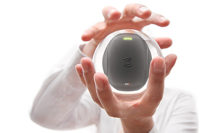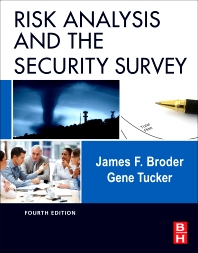For the past decade or more, talk of “multi-technology” (multi-tech) readers has been about transitions (long or short) between one technology and another. First it was from magnetic stripe to proximity, then from proximity to smart cards. Today’s readers, however, stand that idea on its head.
With the economic downturn paralleling advancing technology, the multi-tech reader is a hot commodity for the long term — whether as a way of future-proofing an end user’s technology choices or as an affordable way of helping facilities transition, downsize or converge.
“I think we are starting to see a much greater dual — or more than dual — technology reader, in terms of the credential formats that can be read,” says Charles Crenshaw, chief executive officer (CEO), Isonas Inc., Boulder, Colo. “One reason for that is that there are so many old systems out there that are still perfectly workable and, as people upgrade their facilities, they really don’t want to have to throw everything away.”
Exciting new technology advances are also favoring the multi-format reader, from near field communications (NFC) to ever-expanding smart card formats. Rather than play guessing games as to which technology will be needed down the road, manufacturers now offer almost “omni-tech” capabilities, with the option to turn on any existing technology out there using just one reader.
Driving Forces
There are a few key factors driving the desire for both new technology and multi-technology reader capabilities.
“It is not so much about transitional as it is greater convenience for the end user,” says Dennis Geiszler, vice president of marketing and international sales, Keri Systems, San Jose, Calif. “A lot of companies are downsizing or combining facilities. They want to be able to bring their native card base and take advantage of that without having to rebadge everyone. They may use Indala for parking in one building but individual suites have HID Global cards. With a reader that can accept all of them, it is easier and less expensive in the long run.”
Rick Landuyt, president, RFIDeas, Rolling Meadows, Ill., sees the same trend. “With the way the economy has been the last few years, it is often not as clear that a company will be using just one technology. You are more likely to see one company with multiple offices using vastly different card technologies. The challenge for these companies is they don’t want to go to the expense of rebadging everyone. A multi-tech reader allows those companies to have this reader in place as the office slowly goes onto one common card over time.”
The government, with its PIV, TWIC and CAC smart cards, is another driver for multi-tech smart card readers. Even in the public sector, the trend to smart cards is definitely a “now” rather than a “future” thing at this point.
“There is a big trend to MIFARE, DESFire, EV1 and open architecture in the marketplace,” says Sean Leonard, portfolio marketing director, Ingersoll Rand Security Technologies, Carmel, Ind. “Especially for integrators, being able to provide that platform that doesn’t lock a customer to a format puts the end user at ease and gives the integrator an advantage.”
These two trends are not mutually exclusive. “We have clients with 300,000-400,000 cards and there has been little pressure to move off of that cheap credential,” says Walter Helms, vice president and chief technology officer, Matrix Systems, Dayton, Ohio. “I think when they do make the change it will be direct to smart cards, jumping straight over low frequency proximity. It’s a trade-off at this point between economics and the higher level of security that smart cards bring.”
Security is the third big driver for different reader technologies. Wiegand protocol has been king for decades, but that is changing, and fast.
“The security of the reader communication to the access system is becoming more and more of a hot topic lately, in part driven by government requirements,” says Dave Adams, senior product marketing manager, HID Global, Irvine, Calif. “There are new standards for authenticating a federal employee or contractor, but it is no good if the data out the back of the reader is completely unprotected. The most common protocol today is Wiegand, but while it is unique, it is not secure. Call it a trend, but really it is a mandate for privacy protection across the board. The communication protocol is increasingly going to RS485 with strong encryption or towards an IP-based backbone with those security protocols.”
The general public is also becoming aware of security issues with Wiegand, Geiszler adds. “Customers are telling us that there is information on the street about Wiegand ‘sniffers’ that pick up the signal and present a security risk. Wiegand has had its day and will be around for a long time to come, but people are starting to wise up to it.”
Tech Update
Multi-technology readers today represent more than just a collection of old and new technologies. There are some exciting advancements occurring now that are changing how things will be done in the years to come.
One of the newest formats to begin going into readers is near field communication (NFC). At this point only a handful of manufacturers are doing NFC, but many are looking at it and the next year should tell the tale regarding its reception from the industry overall as well as from end users.
“When people talk about NFC many don’t understand that it actually encompasses three different elements,” Adams says. “One is as a reader, two is as a credential and the third is as a peer-to-peer device. Our newest readers, the iClass SE Platform series, are NFC-enabled. I think in the enterprise market NFC will be adopted pretty soon. 2012 will see more phones with this technology enabled; and companies that currently supply phones to their employees will have the ability to purchase those same phones with this technology in them.”
Google’s recently introduced eWallet capabilities will be a significant factor in the adoption of NFC for other applications, Leonard adds. “Currently there is only one NFC enabled phone that has actually been released, but there is also the option of add-on cards that can be put into phones. The problem is people don’t like to be forced to use something. There needs to be a compelling reason to do it. But once Google gets into it we will start to see a lot of Android phones doing it and a response from Apple. Once that happens, we will likely see a much greater adoption in the security space.”
Scott Lindley, president, Farpointe Data, Sunnyvale, Calif., sees NFC as an interesting development just beginning to enter the security market. “We do a little with NFC and do have compatibility in our readers, but it is a technology that is really still in its infancy. Still, I think it is pretty exciting. If you can use your handset as your access credential or as the reader, you can readily incorporate multiple technologies. Smart phones have data connections, wireless Internet and NFC connection as well. It can be used for on-board biometrics, keypads or video of a specific user. There are quite a few potential applications for this technology,” Lindley says. He stresses, however, that NFC will still likely be an augmentation or addition to current cards and readers, rather than a replacement. “I think it will offer dealers and integrators the opportunity to provide their clients a wider range of solutions and to further tailor access control and security solutions for each application.”
Multi-smart card readers are another recent trend in the card reader market.
“We recently started shipping smart card readers that read every kind of smart card technology out there,” Crenshaw says.
Whether exclusively smart card or a larger mix of technologies, more and more manufacturers are making all-inclusive readers that will accept nearly any technology currently out there. For example RFIDeas’ new PC Prox Plus reader reads 30+ technologies and allows dealers to program it in the field to whichever card technology is needed.
And HID Global’s new iClass SE Platform incorporates not only NFC but many others as well. “It is more than just a multi-class reader,” Adams says. “It is an everything class reader. It can read iClass, MIFARE, DESFire, Java, Indala, PIV, PIV-II, TWIC — all simultaneously. It is almost agnostic to the card technology.”
It also incorporates an embedded secure access module (SAM) and trusted identity platform (TIP) to make the identity on the card as secure as possible. “I think right off the bat it is going to appeal to commercial users that are security conscious and sensitive to identity protection,” Adams adds. “That may not be the bulk of users out there today, but as people become more aware of identity protection issues, they will start to move towards this more secure technology.”
For that same reason, edge device products such as the Schlage (Ingersoll Rand) and Isonas readers are becoming even more attractive to both integrators and end users.
“We don’t have a panel,” Crenshaw says. “The system is contained at the door location itself and is a pure IP/networked edge device. Plugging in our reader/controller is like plugging a printer into a network,” he describes. Not only does this bypass the Wiegand security issues, it also makes things simpler to install and program.
Big Benefits
One of the immediate plusses to the more inclusive multi-tech readers is a reduced SKU. “These readers take that whole inventory complexity and drill it down to just one part,” Landuyt says.
“We built our reader to be as future-proof as possible,” Adams shares. “Our goal was, if you have a new technology in your business environment, you don’t have to rip and replace the readers on the wall to incorporate it into security. You can simply turn that technology on in our existing readers.
“For the large footprint integrator, this reader model is very attractive for its ability to reduce their SKUs yet still remain flexible. Rather than having 12 different readers, they only need one,” Adams explains.
Another benefit to many of these new types of readers is greater opportunity for new or repeat business opportunities for the integrator.
“Our readers open up the possibility of a revenue stream for integrators and dealers with the ability to upgrade them, sometimes without even having to visit the site,” Adams says. “As they add more and more capabilities to the reader there is an upcharge for all those technologies.
“Depending on the connectivity of reader to panel and panel to head end, it is actually possible with the TIP infrastructure to deliver new identities all the way out through our readers and load it directly onto the person’s card,” he adds.
Geiszler says, “Edge device readers also lend themselves nicely to managed services. When you put a reader/control on a door, the reporting and management of that door can go anywhere. The software that manages it could be across the country.”
Leonard sees the same trend. “As systems become more and more capable of communicating to the edge we will see a lot more ability to update firmware on readers from the host systems and also do field configurations and enable easier ways for end users to change the ways their readers behave.”
Integrators should be proactive with these readers, Landuyt adds. “Customers have all these badges and that allows integrators to get deeper into their existing clients businesses. Everyone has other identification and authentication needs, from HIPAA requirements to logical access to industrial applications. The security dealer has already sold a multi-tech reader, so it is a natural thing to increase the business. Think outside the door.”











